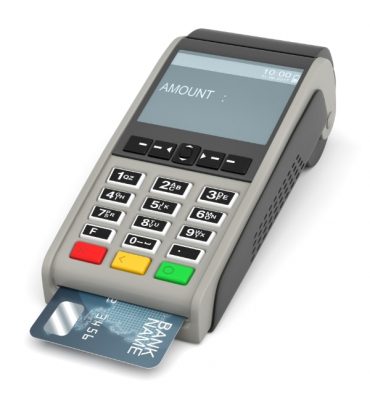You must have heard of people making money from POS business probably and may wish to find out how profitable is POS business in Nigeria. This article will give you an insight into everything you need to know before starting a POS business in Nigeria as well as the requirements involved.
POS is a fast-growing and lucrative business (As others would say) in Nigeria that has taken over every corner of Banks and markets.
POS business is cash flowing business that has silently been flourishing without much awareness but now gaining serious popularity. This is due to an increase in the number of clients who are disseminating the information to others who want a life of convenience and ease.
If you have ever gone to an ATM machine or queued under the hot sun or under showers it should tell you that this business will thrive well any day any time.
People now have a good substitute for banks’ cash withdrawal and transfer through POS. Account opening and BVN registration.
We all know our Nigerian banks could be flooded most times so it makes life easier and more convenient for you when you deviate to POS centres other than standing in a long queue at Banks and ATM machines.
Even with POS business coming to prominence majority of people don’t even know the meaning of POS and even though some have a little idea, they don’t really know how to go about starting a pos business in Nigeria. Seeing all these I was thrilled to come up with this article.
What is POS?
POS simply means Point Of Sale, It is a machine that operates on the basis of making card transactions as payment for goods and services.
A POS machine or device operates just like an ATM machine, it cuts down the stress of going to ATM machines at the Bank to make transactions and also saves your time. This machine enables you to make transactions anywhere at any time.
How Profitable is POS Business in Nigeria 2025?
Most of these POS guys may not tell you the truth but the fact remains that POS Business is profitable in Nigeria. If you are making plans for starting a POS business then you shouldn’t panic as it’s a great opportunity you should capitalize on.
Before coming up with this article, I surveyed a friend of mine who is already in POS Business and he told me everything I needed to know.
Based on the knowledge I gathered from him, coupled with the research I made, I can boldly claim that the POS business is profitable in Nigeria and you could be making a decent income out of it.
You could be making 20k or more weekly from POS Business with those ₦100 transaction charges depending on your location where you can target your customers and perhaps the POS machine.
How To Run A POS Business In Nigeria
Before starting a POS Business, sit down and take a chilled cup of coffee and ask yourself “Do I have the requirements for this business?” If you do then that’s cool, if you don’t, then here are the basic things you should consider before starting a POS business in Nigeria.
POS Business Requirements
- Location
- Bank Approval
- Shop
- Startup Capital
- POS Machine
- Security
- Register with CAC (Corporate Affairs Commission)
1. Location
Even if it’s Akara and cake you are selling, you need a good location that will target your customers. The same scenario applies to POS Business, you can not have a successful POS business in a location that is far from your target customers, it would rather frustrate your life and you might end up getting frustrated with life and begin to lay curses on your village people.
Your POS business location should be located where you will easily get customers that will patronize you and not just that it shouldn’t be in a competitive environment.
Consider the following areas for your location
- Places With a Shortage of ATM
People queue up at ATMs where most times there is a shortage of ATMs and in most cases where ATMs are available, Network issues could creep in
- Places Close To Banks
It may sound weird but having a POS shop located close to a Bank is still fine. We know the status of Nigerian banks, they could frustrate your life and in a pandemic like this you wouldn’t wanna be wearing a face mask to waste your time in the queue at banks, would you?.
In most cases, people prefer going to POS centers not even regarding the transaction charges involved.
- Crowded Areas
Whether in urban or rural areas, you can still target your POS business location in crowded areas e.g markets
- School Environments
Having a POS business inside or near a school environment is ideal as most schools have a shortage of ATMs. In my school back then I preferred going to a POS shop for withdrawals rather than wasting my time on school ATMs, they were either out of service or unable to dispense cash.
2. Bank Approval
Once you have gotten a location, next is to choose a bank of your choice to start your POS Business. People usually go for First Bank although I can’t really tell the differences among them but just approach any bank and write to the manager you wish to open a POS business.
Below are some important information about You that the Bank will need
- Valid means of identification( Driver’s license, National ID, International passport or voter’s card)
- BVN
- 2 passport photographs
- 2 current account references
- Tax Identification Number (TIN)
- Memorandum and Article of Association.
- Credit Bureau Report
- A minimum working capital of N50,000
Once this information is provided, you will be registered with that bank and then proceed to download the POS app on your smartphone.
Nevertheless, before registration, they will have to confirm you are not owing to any financial institution be it online or offline.
3. Shop
Once you have gotten the desired location and registered with the Bank of your choice, you can set up your shop either as a container in the form of an umbrella for a start, then you can extend later.
4. Start-Up capital
Every good business needs good capital, right? obviously yes. So you need good capital at hand that will convince the bank that you are serious with the business and give them enough reasons why they should register you successfully.
Starting capital of 100K or above is ideal for starting a POS business anywhere in Nigeria.
5. POS Machine
Upon successful registration, the Banks will give you a banner and POS machine all for free. However, you will be placed on probation for 4 months and will monitor how you use the App on your smartphone.
Failure to comply with any of their policies will be sanctioned and the POS Machine will be collected from you.
6. Security
POS business is a business that deals with cash in hand day in and day out. You wouldn’t want someone to attack you and collect your money, would you? obviously No. So when setting up a POS Business shop ensure the location is well-secured and safe from thieves
Buy good padlocks and lock your shop well when you close for the day, do not allow people to come around and relax with no intentions of making transactions.
Lastly, the banks demand that no POS shop should operate after 5 pm by evening so you should always be conscious of that.
7. Register With CAC
Did you know comes with massive benefits? When it comes to registering a business a lot of people take things for granted and neglect this important activity.
When your business is registered with CAC, it gives authenticity to the business and will also qualify you to apply for loans when the need arises. NYIF (Nigerian Youth Investment Fund) is currently making waves now and only those with CAC certificates have benefited from this scheme.
But the good news is even if you haven’t registered your POS or any other business with CAC we can do that for you.
We Can Get Your Business, Company or Organization Registered With CAC
Once your business is registered with CAC you can enjoy the massive benefits it comes with.
Facts About POS Machine
Having a POS machine is the most vital thing to have before starting a POS business in Nigeria. However, the POS machine terms could be revoked and the Bank might collect it from you if you violate any of their policies. And again you will have to be making at least 20 transactions a day. So it is very important to have your own POS machine.
Benefits of Bank POS Machine Over Company POS Machine
Even though having your Point of Sale machine is good, the massive benefits Bank POS machines come with can not be underestimated.
For example, Bank POS machines charge customers for each transaction, these charges come directly from the bank and neither the agent nor the customer has any control over it.
If a customer withdraws 100k, the bank will charge ₦100 for the transaction and share 50/50 each with the agent, the commissions are accumulated and paid to the POS agent by month-end.
However, Company POS machines charge agents ₦30 for each transaction made, the agent will now have to collect his preferred amount from the customer.
So in summary, Using a Bank POS machine is more beneficial because you will receive 50% while the bank takes 50% for all transactions and at the end of the month you will still be given a commission from the bank.
But with Company POS machines you only earn rewards from charges for each transaction and you don’t earn or receive further commissions from the company by month-end.
The only benefit of a Company Point of Sale machine over a Bank’s own is it’s your personal property and it won’t be collected back, in most cases, it is not easy to get a Point of Sale machine from the Bank.
How Much is a POS Machine In Nigeria?
The Price of POS machines in Nigeria depends, for example, the cost of buying a POS device directly from the Bank is around 85k. However, you can go for cheaper options by buying a POS device from companies such as
- Opay
- Monie Point
- Power Force
- Kudi
You can get a good working POS device from these companies for as low as 25k.
POS Machine Price in Jumia
To get the latest prince of POS machines in Jumia kindly visit the Jumia site and search for your preferred devices.
Benefits Of POS Business In Nigeria
As of this time, it’s no you shouldn’t be asking how profitable is POS business is in Nigeria, having read much about it up to this stage. Nevertheless, the POS business comes with massive benefits as highlighted below.
- It is Profitable (If set up in a Good location)
- You don’t need a degree to start a POS Business
- It is very Flexible
- The Banks are always by your side and offer insurance support
- You may build a strong relationship with customers who will eventually patronize other services you have to offer
- The business is sustainable
Limitations & Challenges Of POS Business
- Unavailable Power/source of Light to charge the device
- Inability to effectively use the device
- Network issues
- One person working with many people (Crowd)
- Thieves
Must Read: How To Become GTBank POS Agent
Conclusion:
POS business in Nigeria is a fast-growing business that requires little or no skill that you should consider. There are lots of benefits and conveniences in the business. All you need is to get the requirements and follow the procedures involved and you can start up your POS shop.
I hope this article has provided exquisite information as to how profitable the POS business is in Nigeria. If you have any questions, suggestions or recommendations do hit us in the comment box below.
Sharing is Caring!!!

Legacy Benjamin is a serial SEO content writer with a half-decade of experience in the field of blogging. He is also a skilled business consultant, providing valuable insights to companies and individuals seeking growth and success. His expertise lies in crafting compelling and engaging content that captivates audiences and drives business results. For business deals, contact him




Hello,
If you want to go into pos business, there are so many company platform this days
like http://www.virtatrade.com that can enable you to raise the funds you need to start up your
pos business without you seeking for a loan
This company platform is where so many business dealers from different part of the
world raise funds to backup there various business financially
I use this company platform to backup my cocoa beans export business each time am
running loss financially
You can visit and register with the company website here http://www.virtatrade.com to raise
the funds you need to start up your pos business now
Hello,
If you need financial backup to start up your pos business visit here http://www.virtatrade.com now
Best information.
Nice work. I’ve learned a great deal from it.